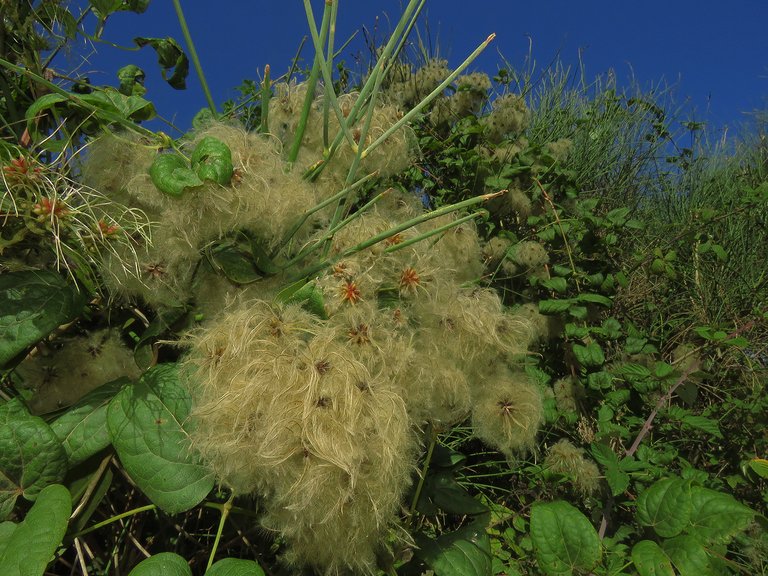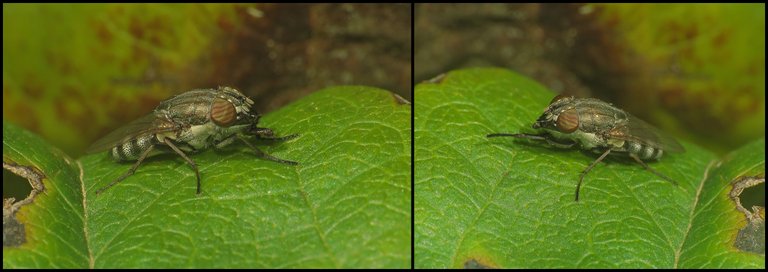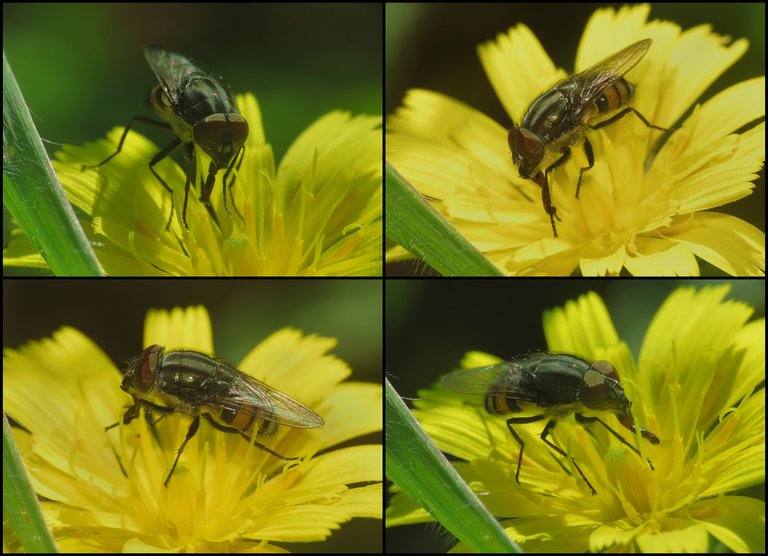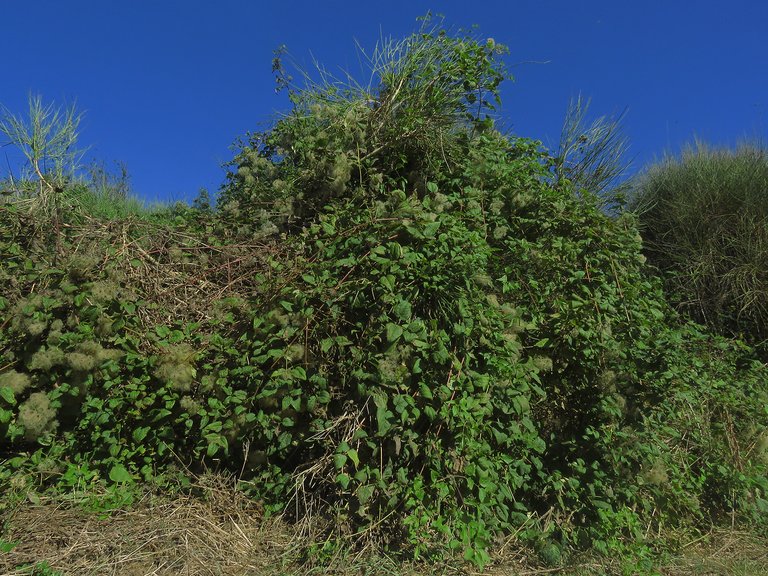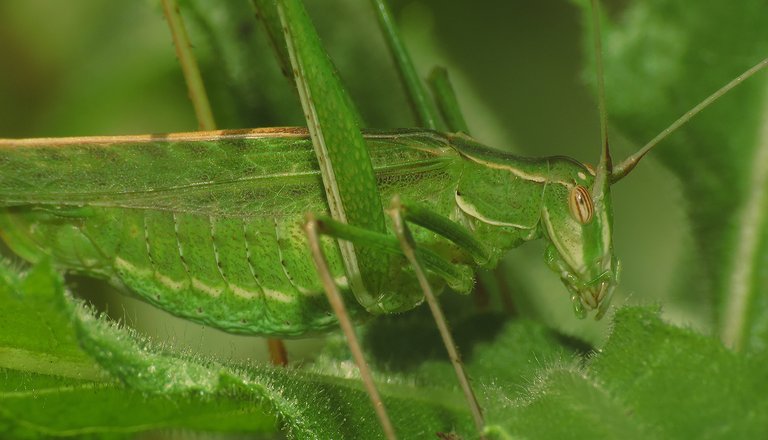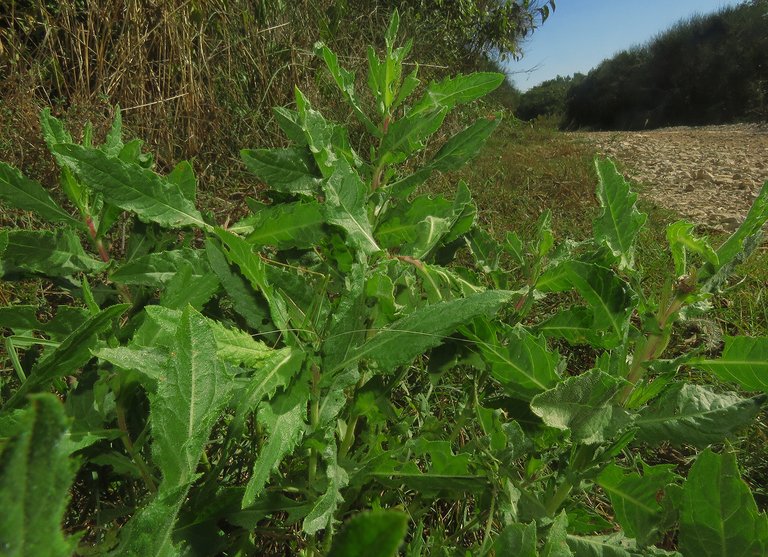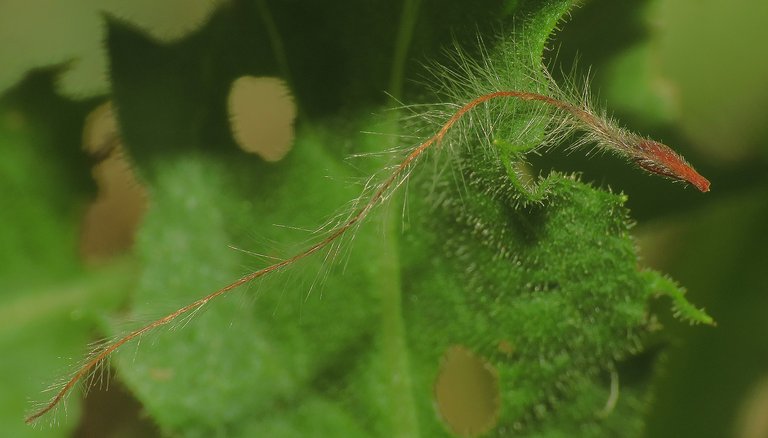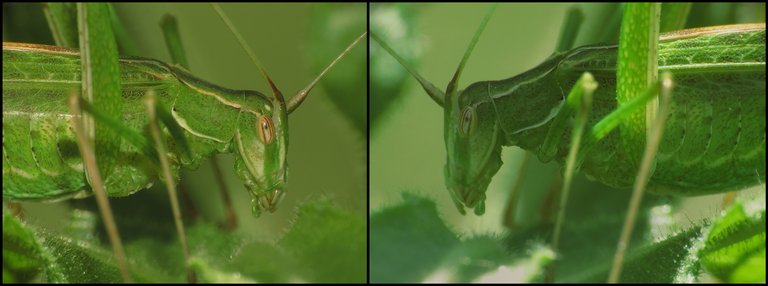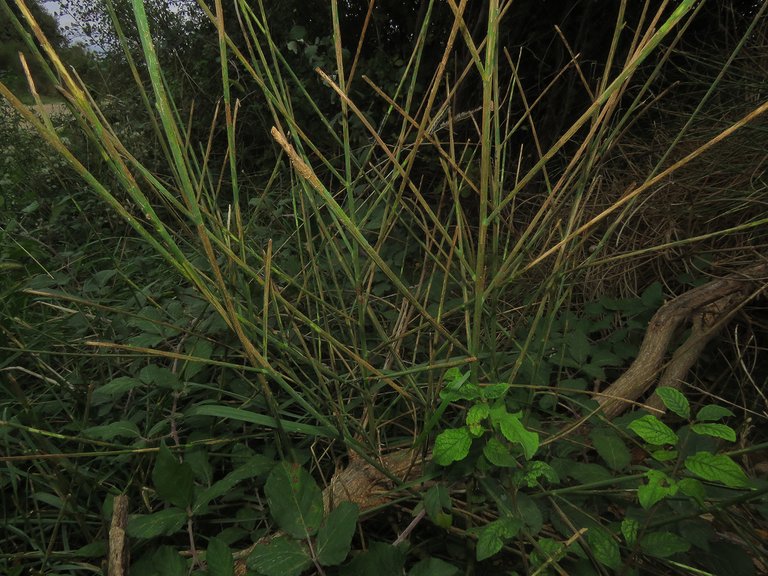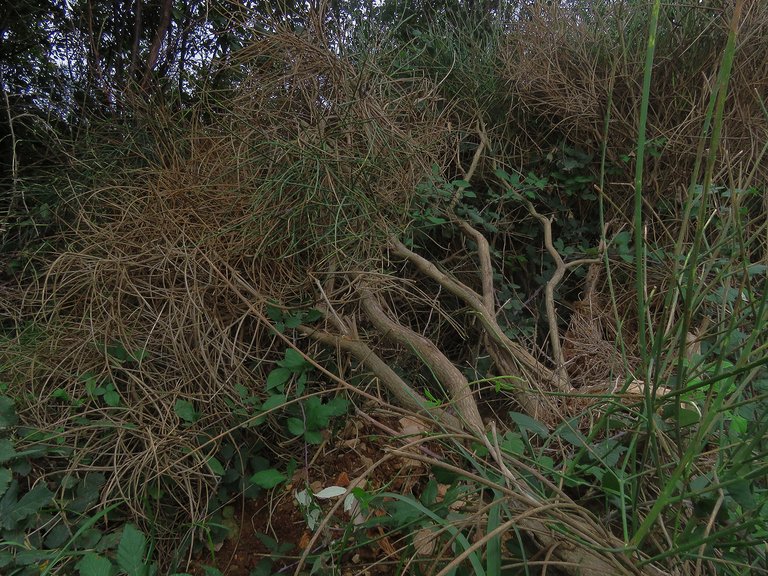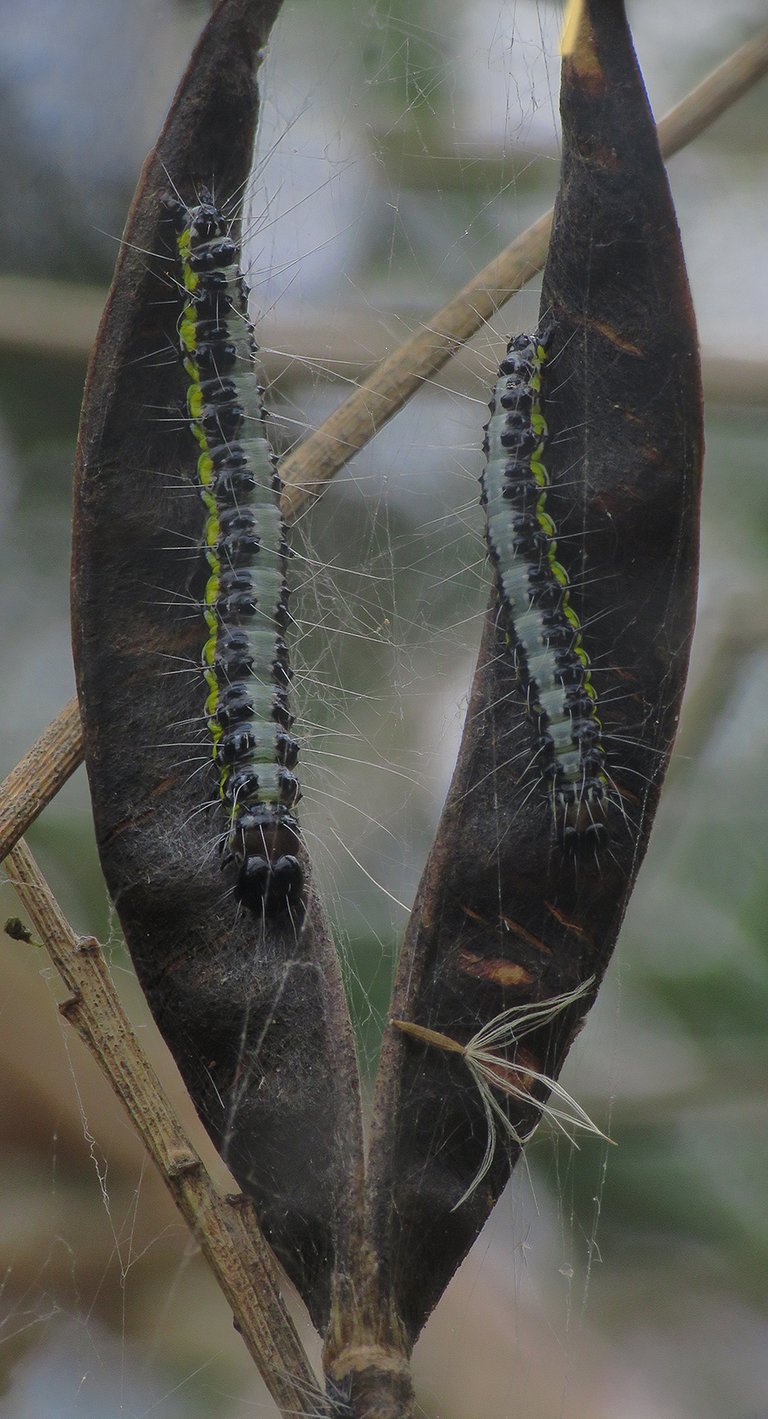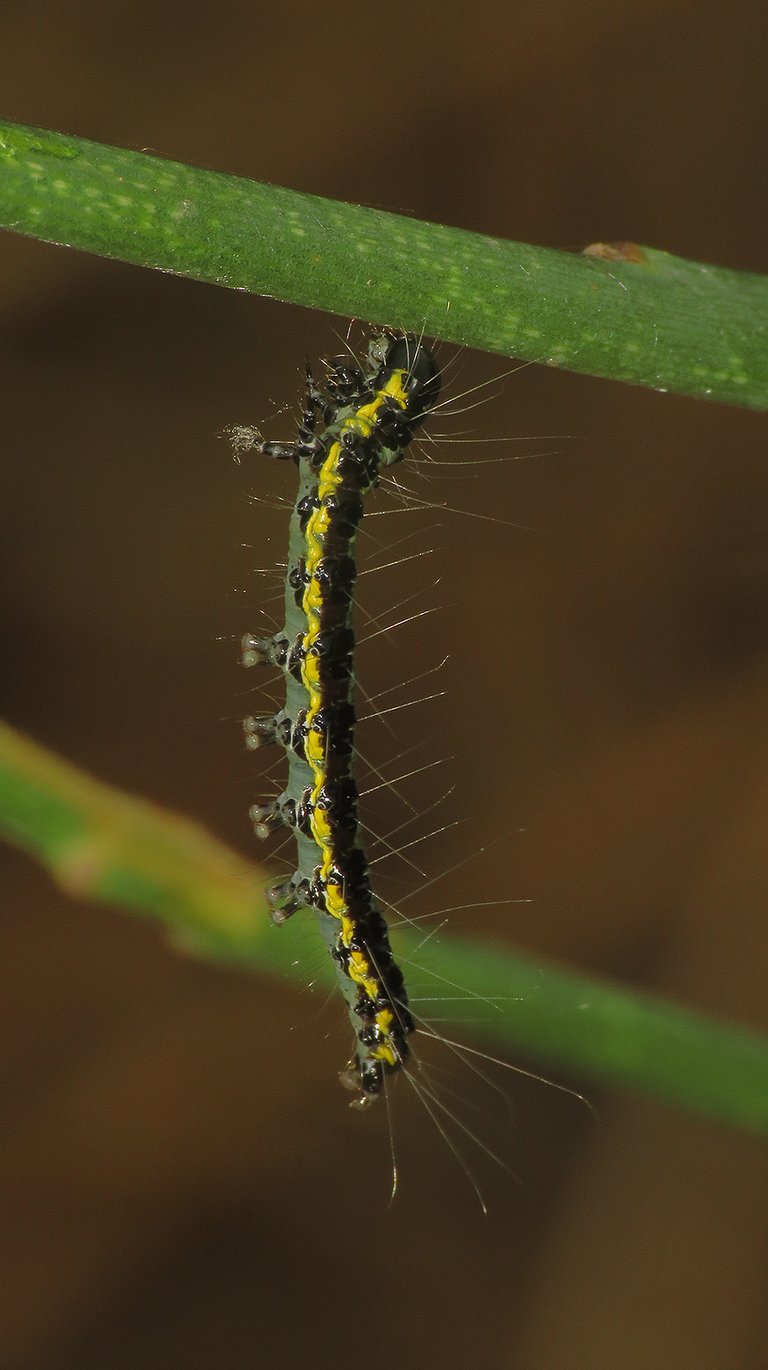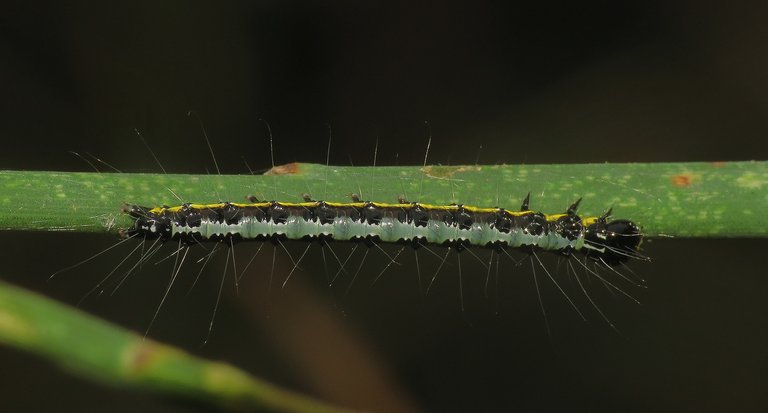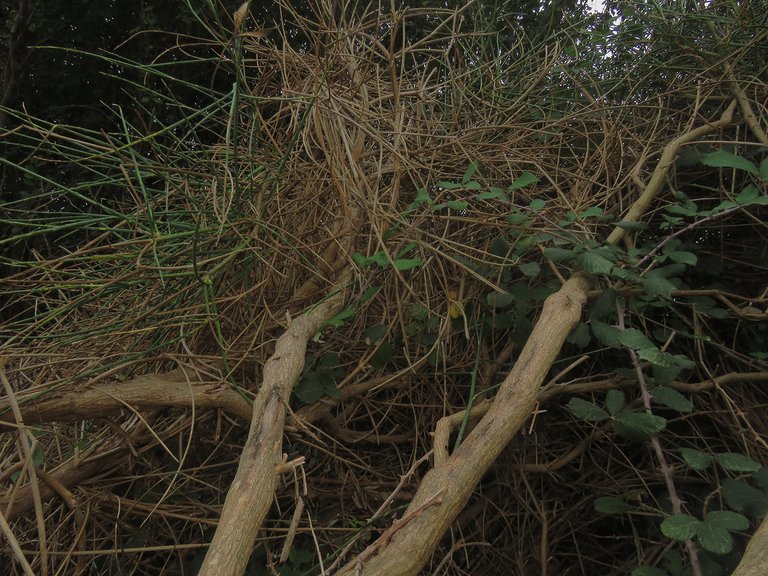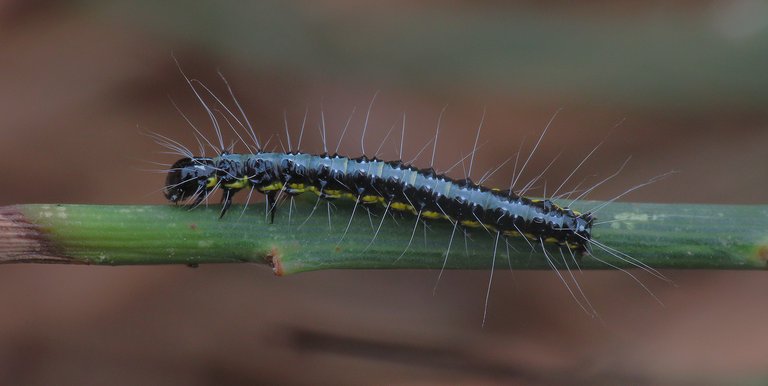It was an exceptionally warm, sunny afternoon, and, highly inspired by nature, I had plenty of uplifting fun exploring the small wonders of nature around me through the macro lens that's becoming one of the things I always carry with me. You know, like the wallet with all the obligatory documents, the house key, the car key, the camera - all the basic stuff that should be surgically incorporated into the body of a contemporary man.
In today's post, as always in this series, I'll show you some small arthropods and plants I photographed in Marlera on one specific October day. This time that day is the 24th of October, and you'll see mostly insects, just a few plants, and only one spider. Before continuing with the macro stuff, I would like to say a few words that explain what the heck is Marlera. It won't be a long explanation, everything is packed into one sentence - Marlera is a coastal area situated a couple of kilometers from the village of Liznjan and about five or six kilometers from where I live.
With that out of the way, let's start the macro mania.
This is the Pieris rapae, a butterfly from the Pieridae family. The butterfly stopped to rest on the Clematis vitalba leaf for a few seconds when this photograph was taken.

Clematis vitalba is a deciduous climbing plant that covers many shrubs and small trees in Marlera.
Here you can take a good look at its fruits. I used the macro lens in this photograph.
In autumn, clusters of fruits form a large quantity of lovely fluff on top of the coastal vegetation.
Each fruit has a long appendage covered with many silky hairs. In the following photograph ...
... you can see a fly from the Muscidae family resting on the leaf of the same plant.
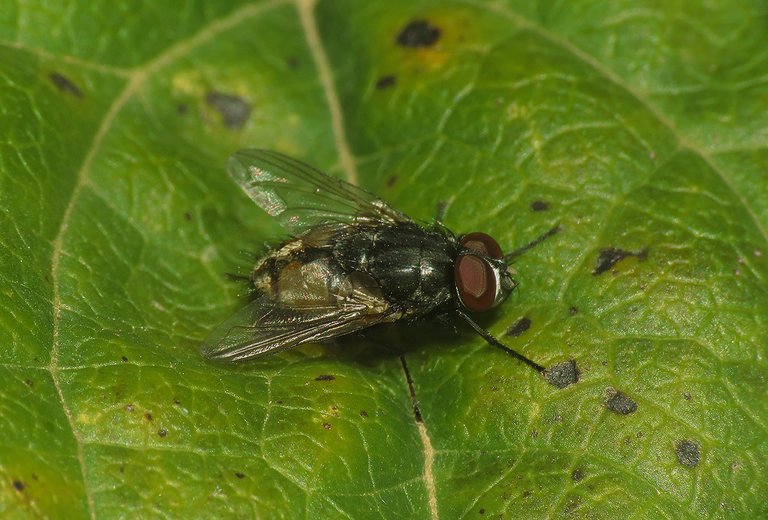
The name of the species is Musca autumnalis. These flies were very annoying on the 24th of October. There are a few common names by which this species is known. One of them is the "face fly". While I was photographing the fly shown in this and the previous shot, about a dozen flies of the same kind were buzzing around my head and tickling my eyes, nose, and mouth.
Adult face flies feed mainly on the tears, sweat, and blood of cattle animals and humans. Regarding the blood, they don't bite but only feed on what comes out of small wounds, often made by bites of other insects, like horse fliers for example.
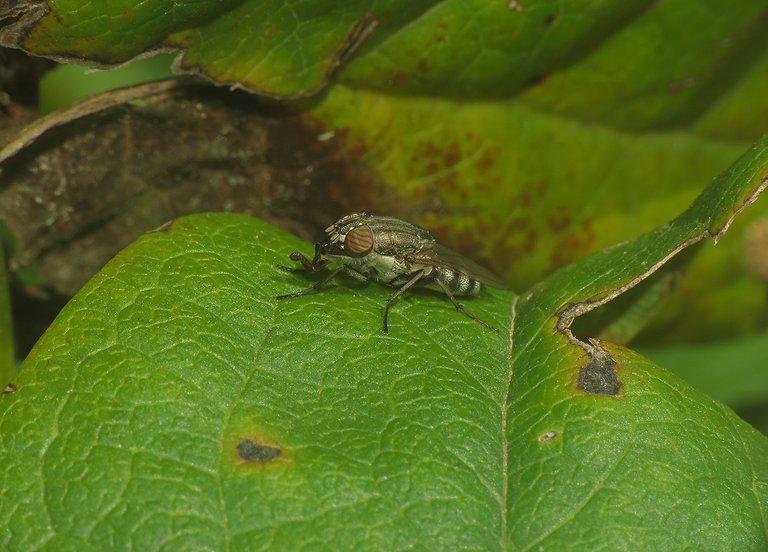
You can see a very different fly resting on the Clematis vitalba leaf in this shot. In one of the following two photographs ...
... the same insect is cleaning its forelegs in a manner similar to what we humans do when we are washing our hands.
The name of the species is Stomorhina lunata. It belongs to the Rhiniidae family.
Here you can see a female.
Only a meter or two from there ...
... among the low, herbaceous vegetation under the shrubs, a male was feeding on nectar provided by the Crepis sancta flower.
In this wide shot, you can see how abundantly can shrubs and small trees be covered with Clematis vitalba.
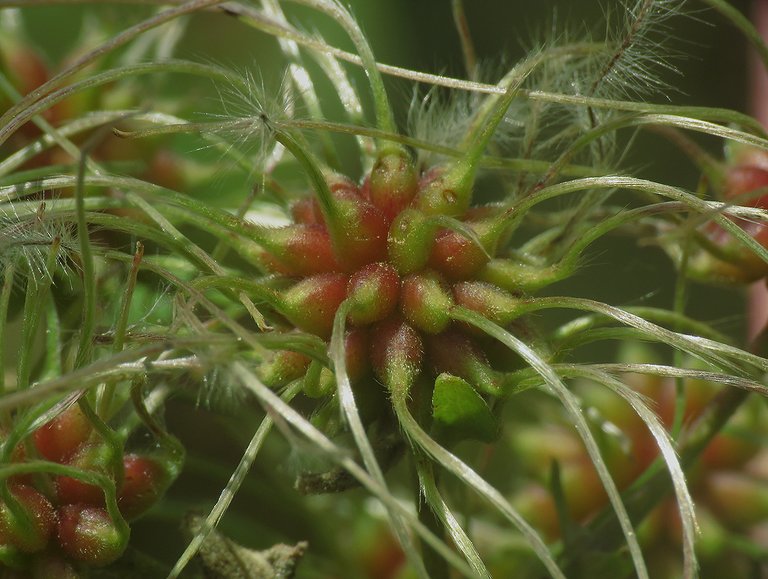
On the 24th of October, most fruits were ripe and in good shape.

I saw only a few clusters made of dry fruits ready to detach and be carried by the wind.
This is the Tylopsis lilifolia ...
... an elegant bushcricket from the Tettigoniidae family. I mean, all bushcrickets belong to that family.
Due to its mimetic shapes and colors, Tylopsis lilifolia was hard to notice on the Dittrichia viscosa plant between the wall of shrubs and one of the unpaved roads that lead through Marlera.

On the leaves of the same plant, I also photographed two dry fruits fallen from the nearby Clematis vitalba.
This one looks a bit like some interesting alien creature I never saw before.
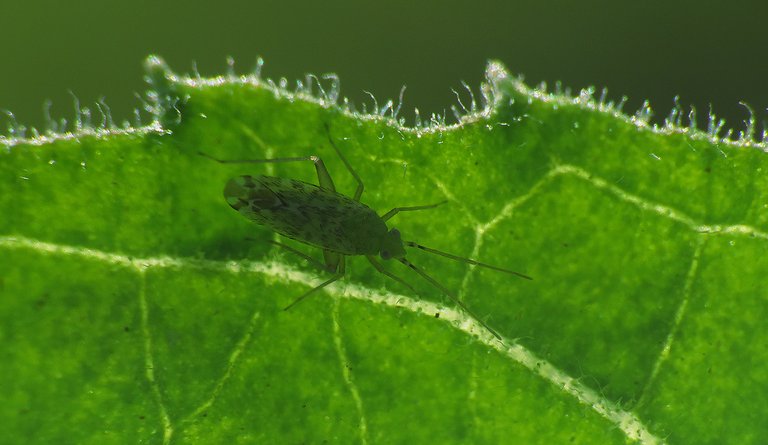
Here you can see the Macrotylus paykulli, a tiny bug from the Miridae family that was hiding on the lower surface of the leaf. This insect was photographed on the same Dittrichia viscosa plant. The spider, shown in the following shot ...

... was resting on the upper surface of one of the leaves a bit lower on the plant.
The name of the species is Oxyopes heterophthalmus. It belongs to the Oxyopidae family.
I photographed one more bug on Dittrichia viscosa. The family is certainly Rhopalidae but I'm not sure about the name of the species. It could be the Stictopleurus abutilon. Maybe. Before leaving Dittrichia viscosa ...
... I would like to show you two more portraits of the Tylopsis lilifolia bushcricket that was posing on that plant. In the photograph on the left, I used the flash, while the one on the right was taken in ambient light.
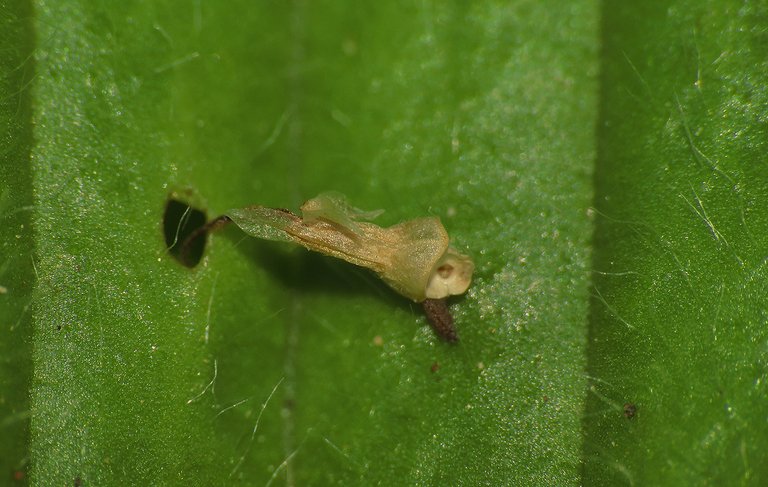
The little thing shown in this shot was attached to the leaf of the Plantago lanceolata. I don't know what is this exactly. I mean, it's a plant part, not an animal, that's for sure. It looks like some tiny flower that has fallen from one of the neighboring plants.
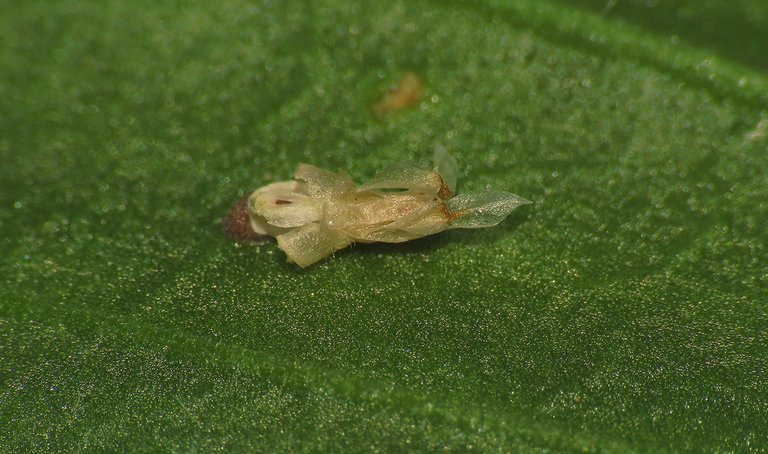
You can see another one here.
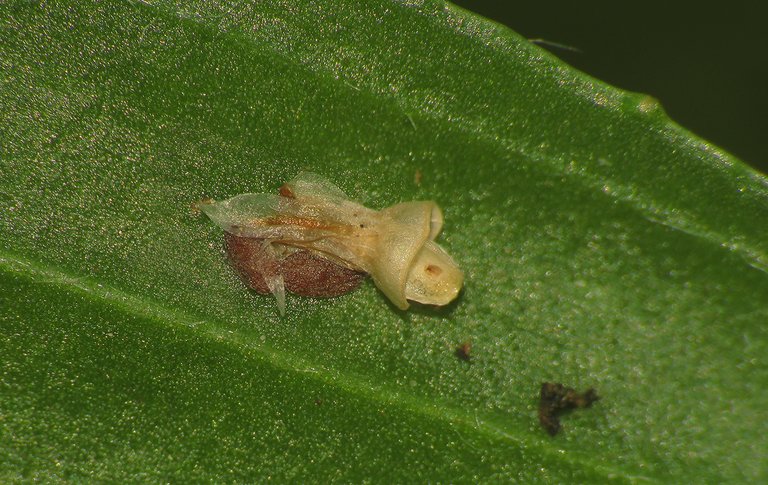
This is the third and the last one you'll see in today's post.
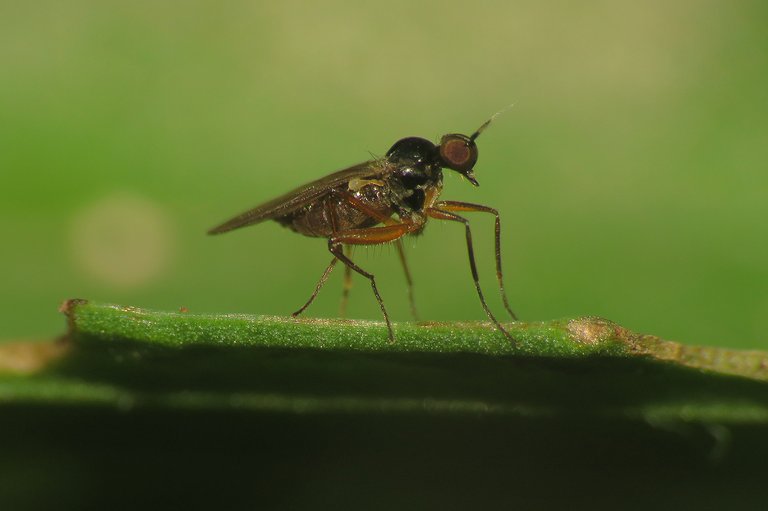
This tiny fly was photographed on the same plant. Can't tell you the name of the species, but I'm pretty sure that it's a little predator from the genus Platypalpus of the Hybotidae family. I never saw this fly before.

Here you can see a Theba pisana snail that was resting, sealed in its lovely spiral shell, on the upper surface of the Clematis vitalba leaf. In the following photograph ...
... you can take a look at the foliage of another climbing plant - the Vitis sylvestris. On one of its leaves ...
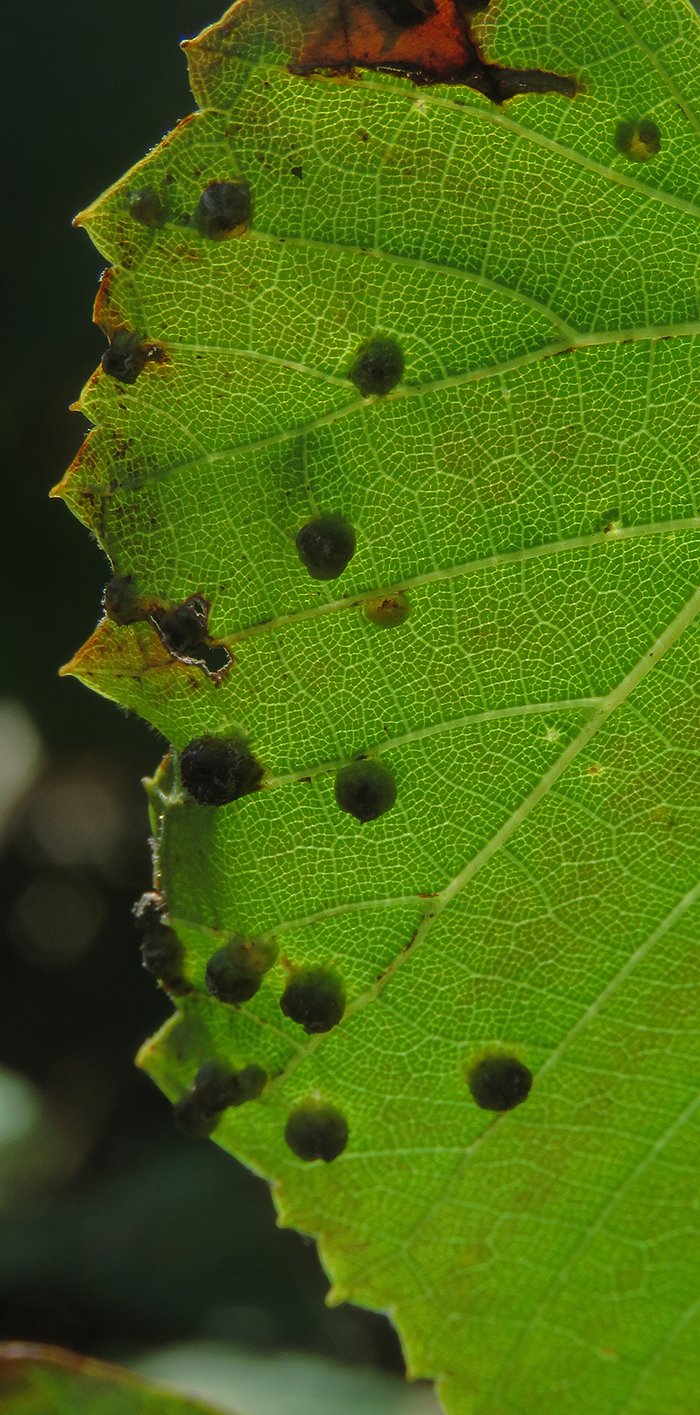
... I photographed these small protuberances ...
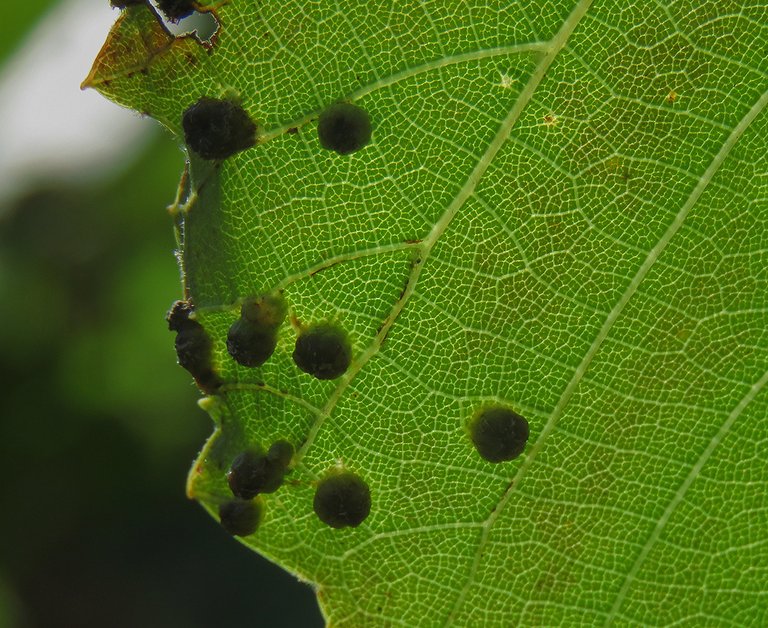
... that look like a symptom of some plant disease.
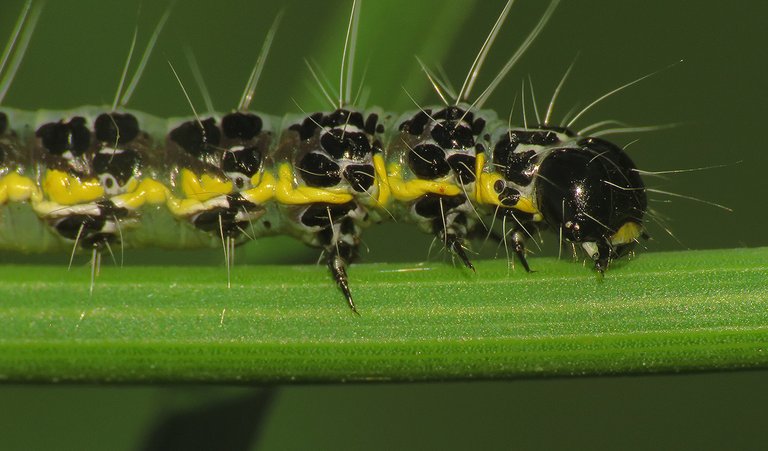
This lovely caterpillar ...
... it's the larval stage of a moth from the Crambidae family.
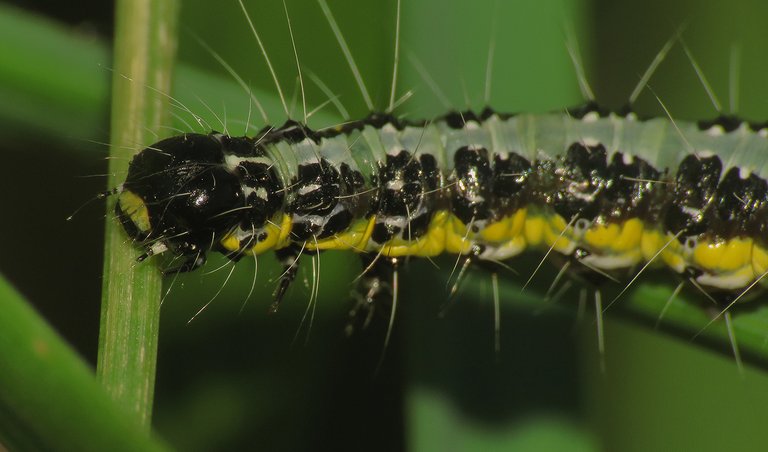
The name of the species is Uresiphita gilvata.
Tall Spartium junceum shrubs can be found all across Marlera but on the 24th of October this year, I photographed only this group of green shoots ...
... that were growing on the dry, cut branch lying by the side of the road, becouse only there ...
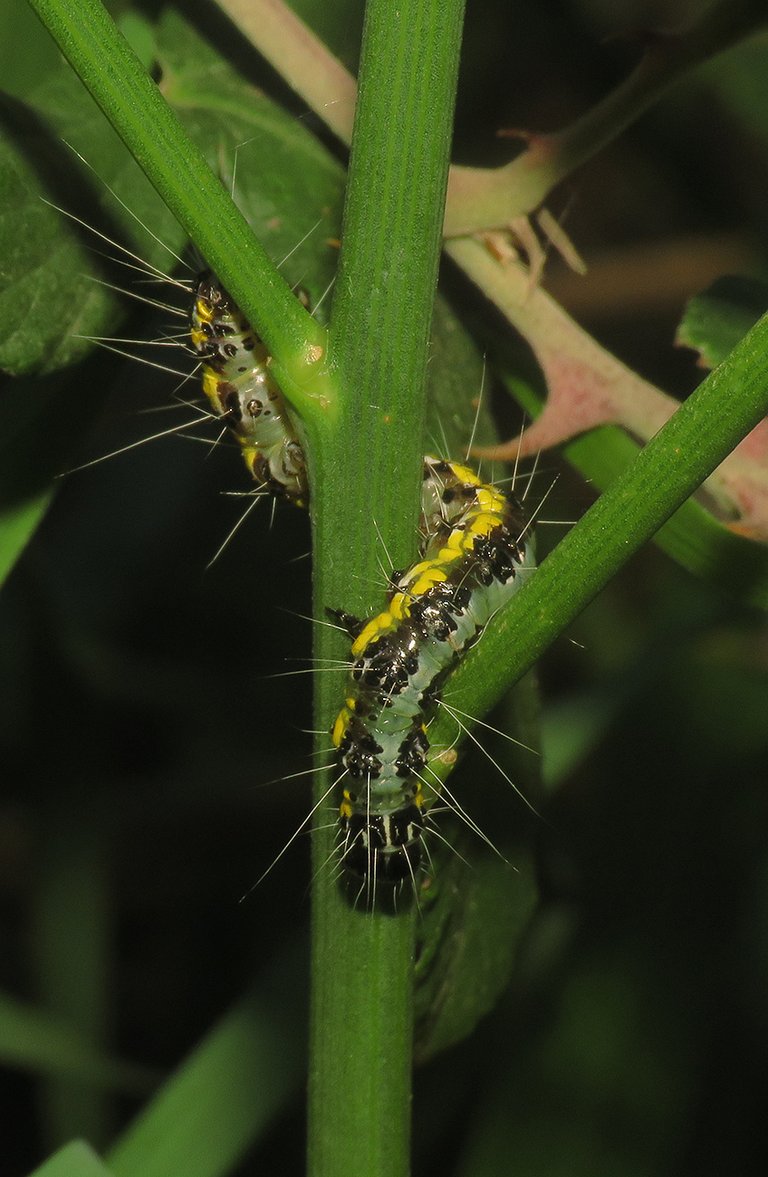
... I found a bunch of Uresiphita gilvata caterpillars.

I took many caterpillar portraits on that occasion.
Here you can see one of those caterpillars chewing the tissue of the plant.
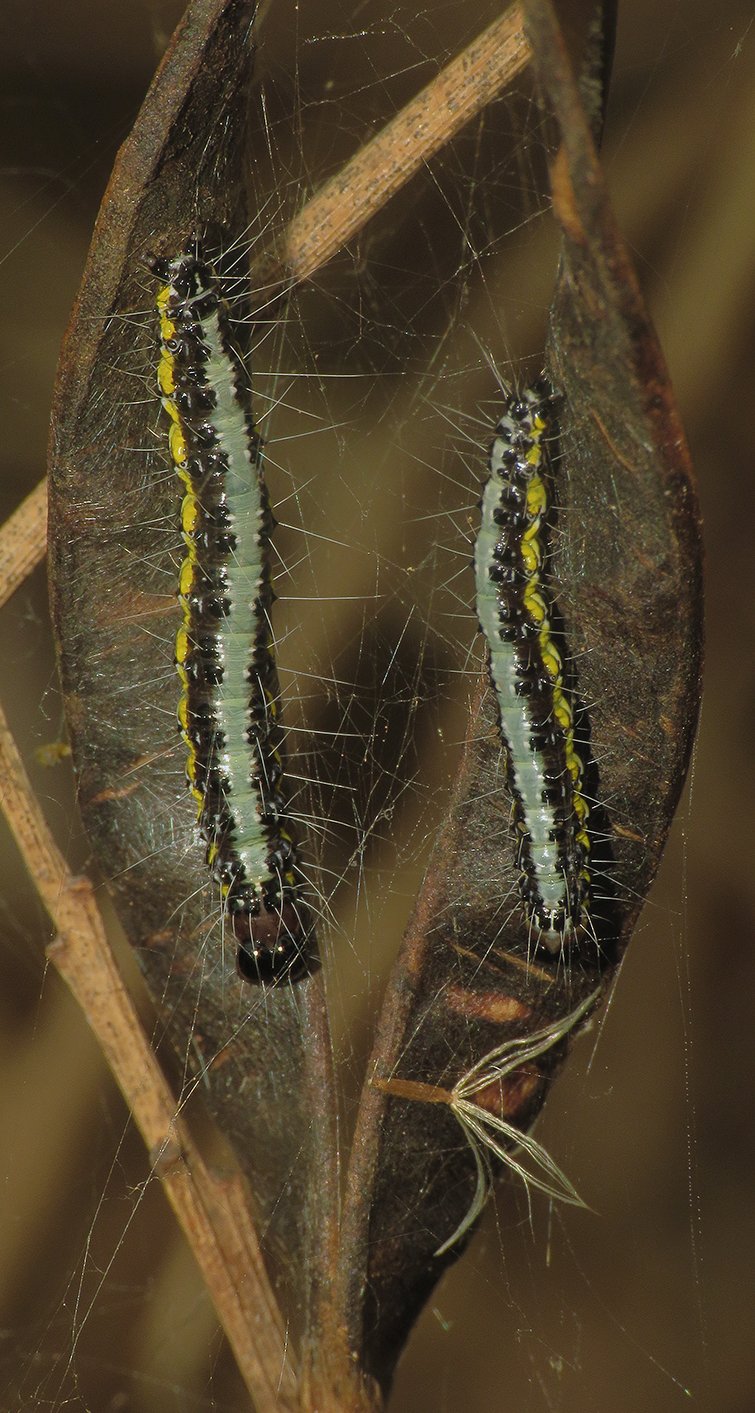
These two were resting, each one on one of the two halves of an open seed pod.
The light was relatively low in the shade, so I first took a photograph with the flash of my camera on. The silky threads produced by the larvae are also clearly visible in this shot.
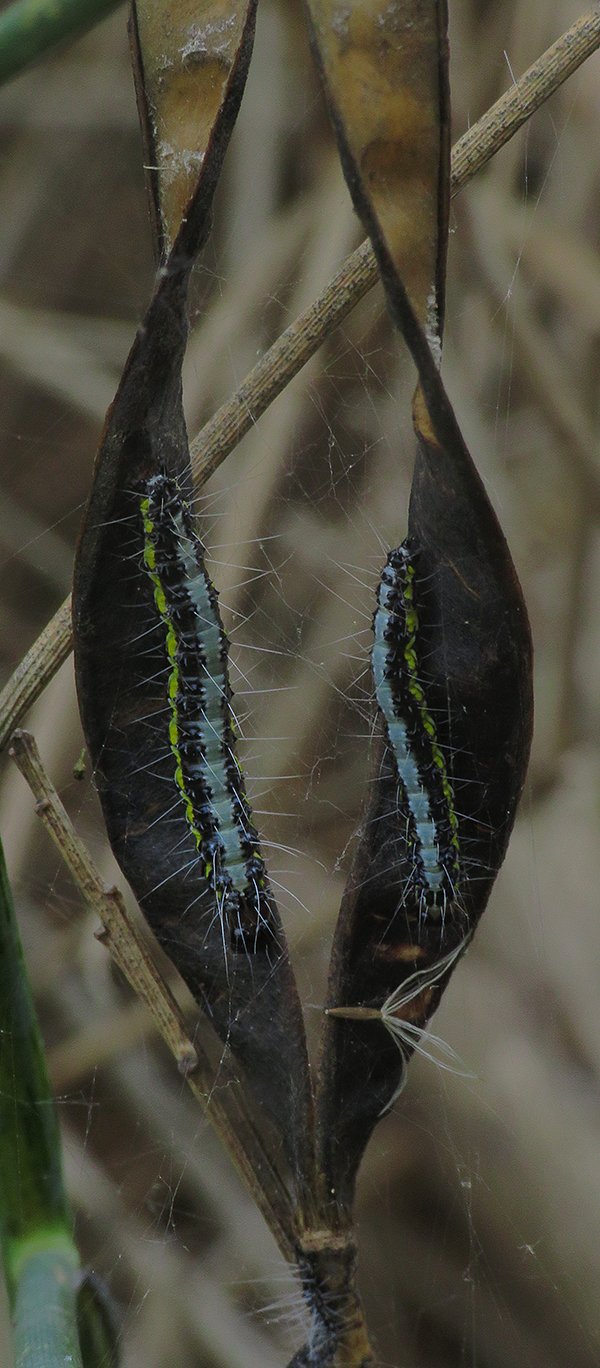
The colors of the caterpillars looked considerably better in ambient light so, after quite a few unsuccessful attempts, I managed to get this fairly good shot that required a longer exposure. I wasn't completely satisfied though.
Here you can see how the scene looked from a lower angle that provided a brighter background. I like this version the best. The blue on the caterpillar's back looks better in the previous shot but the overall atmosphere is better conveyed through this one.

While the other Uresiphita gilvata caterpillars were resting, feeding ...

... or crawling around ...
... one of them was hanging ...
... on a silky thread of its own production.
The caterpillar was slowly climbing the thread and I was following the process through the macro lens. When the following photograph was taken ...
... the resourceful larva has reached the plant at the end of the thread.
Here you can see the same caterpillar resting on the green shoot at the base of a dead Spartium junceum branch.
Among the dry shoots on the upper part of the same branch ...

... I found a bug from the Coreidae family. The name of the species is Coreus marginatus. This insect was well-camouflaged in the brownish environment.
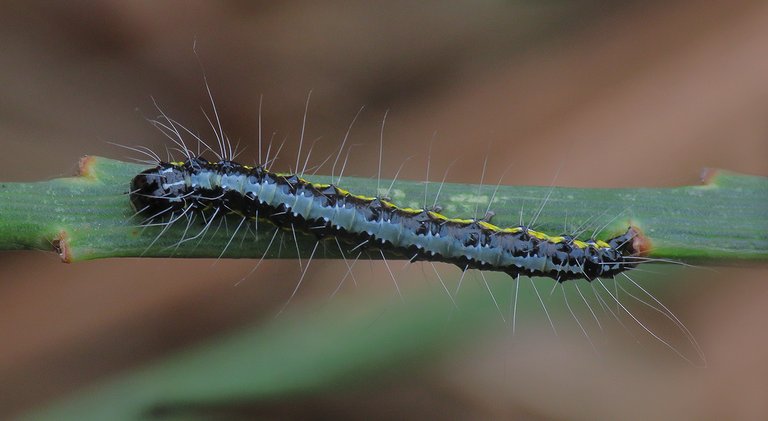
Here you can see yet another Uresiphita gilvata caterpillar. With this one ...
... the post is ready to end.
AS ALWAYS HERE ON HIVE, THE PHOTOGRAPHS IN THIS POST THAT WAS INSPIRED BY NATURE, THE PHOTOGRAPHS ARE MY WORK.
The following links will take you to the sites with more information about some of the protagonists of this post. I found some stuff about them there.
https://en.wikipedia.org/wiki/Pieris_rapae
https://en.wikipedia.org/wiki/Clematis_vitalba
https://en.wikipedia.org/wiki/Musca_autumnalis
https://en.wikipedia.org/wiki/Stomorhina_lunata
https://en.wikipedia.org/wiki/Tylopsis_lilifolia
https://www.britishbugs.org.uk/heteroptera/Miridae/Macrotylus_paykulli.html
https://en.wikipedia.org/wiki/Oxyopes_heterophthalmus
https://www.britishbugs.org.uk/heteroptera/Rhopalidae/s_abutilon.html
https://en.wikipedia.org/wiki/Platypalpus
https://www.jkip.kit.edu/garten/english/853.php
https://en.wikipedia.org/wiki/Uresiphita_gilvata



